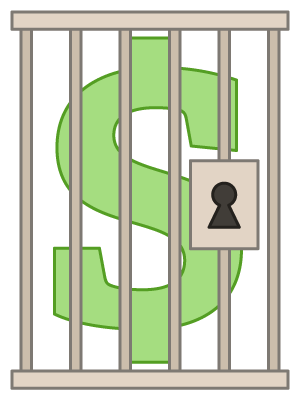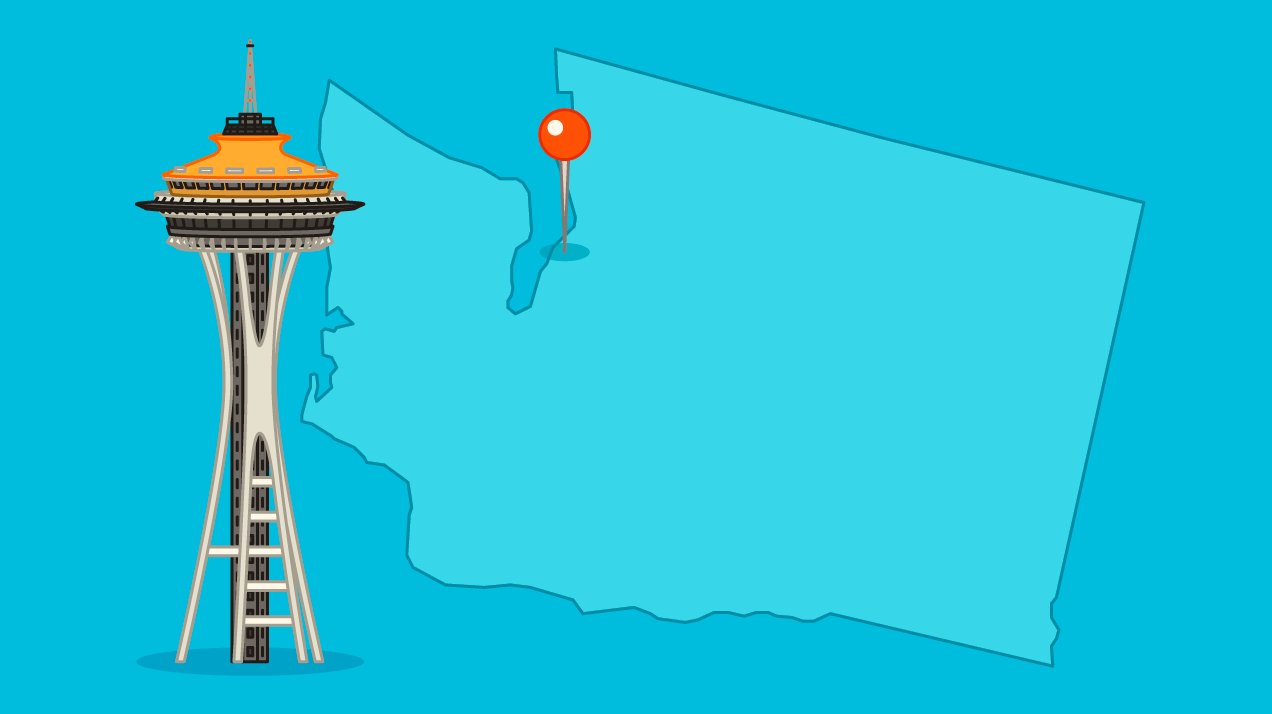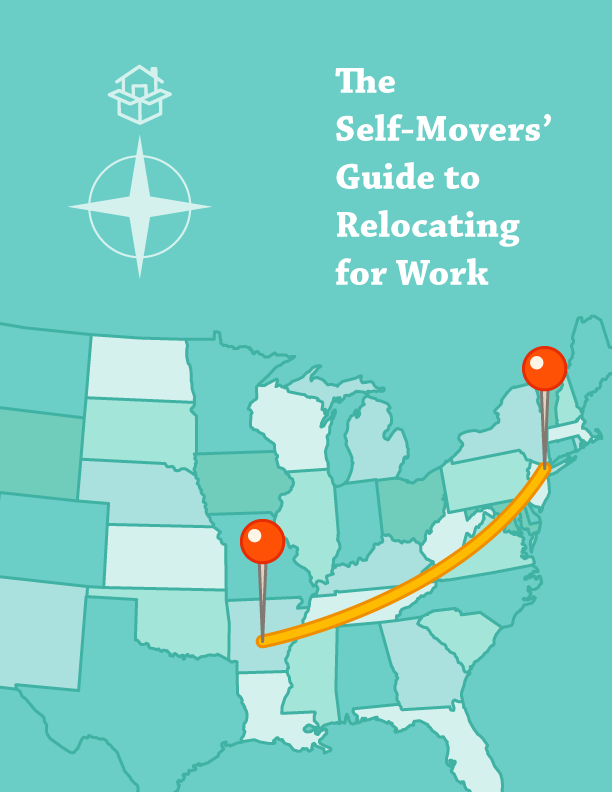 When it comes to personal things like skincare and hairstyling, we’re all a little like snowflakes, right?Oily T-zone, dry elbows, temperamental curls… the weather affects all of it,yet over the years we learn to manage our quirks and find products and routines that work well for us and even make us look and feel great.But what happens when we move to a new city,maybe skip a time zone or two and land in a place where the climate throws our daily habits into a tailspin?
When it comes to personal things like skincare and hairstyling, we’re all a little like snowflakes, right?Oily T-zone, dry elbows, temperamental curls… the weather affects all of it,yet over the years we learn to manage our quirks and find products and routines that work well for us and even make us look and feel great.But what happens when we move to a new city,maybe skip a time zone or two and land in a place where the climate throws our daily habits into a tailspin?
We’ve seen it happen plenty of times: what were once flowing waves are suddenly frizzy wasp’s nests, while yesterday’s porcelain complexion becomes today’s perspiration-drenched mess.At Moveline, we’ve helped all kinds of people move all kinds of places,and we’ve picked up a few pointers along the way to keep you looking and feeling like your old self,even when you’re in a brand new city with weather that renders your old routines useless.
Sample new stuff
It can be kind of fun to try new products and switch up our regimens,but the downside is, of course, that it can also be expensive.Luckily, lots of services now make it easier than ever to try before you buy.We’ve all heard of BirchBox by now (yep, it offers boxes for guys as well as girls),and thanks to its success there’s now a host of sample subscription services parroting its business model and offering everything from hard-to-find,under-the-radar beauty brands (Beauty Army: 9 customized samples a month for $12) toluxury collections (Glossybox: a half-dozen or so samples for $21 per month).
Only want vegan, organic products exactly when you want them? Green Grab Bag has you covered;you can build a boho box of beauty from scratch for $15, $25 or $35 and get it delivered whenever you choose. And there’s more where all this stuff came from:for a rundown on no fewer than 8 sample services, check out this list from Allure.Also, a pro tip: the next time you buy something from Sephora, be sure to take advantage of the 3 free samples that come with every purchase (even a $3 makeup sponge) –you can choose from a broad selection and try out new stuff without breaking the bank.
Get with the program
Already have a good idea of the kinds of products you’ll need to invest in,but want to make sure you’re not barking up the wrong tree? Sites like The Beauty Department,Elle and Allure offer a wealth of info on every beauty consumable under the sun,while Healthline offers its top 10 list of eco-friendly beauty blogs for good green advice.And to address what’s perhaps the most maddening problem of all:if you and your head full of curls just moved from someplace humid to someplace arid,check out these tips to give those curls the whirl they deserve.
And last but most definitely not least: hey, look. Moving is a stressful process,and looking perfect in the aftermath is the least of anyone’s worries.So for a few words of wisdom, check out Beautylish’s post on moving that everyone from the bare-faced naturalist to the most devout product junkie can get behind.So do yourself a solid: just get lots of sleep, drink lots of water, and dive headfirst into your sweet new surroundings.Eventually, your skin, hair and sense of (climate-appropriate) style will catch up.
If you haven’t moved yet but you’re planning to take the leap soon, let Moveline help.We demystify the inventory process and get you the best prices from the most reputable movers, and we stick by you every step of the way.The best part: we’re free. Visit our homepage and let us help you get moving today.
Whether your move is just a few streets over or all the way from one coast to another,Moveline can help. Praised by The New York Times, Forbes, Lifehacker, TechCrunch and more,we take the headache out of moving by acting on our customers’ behalf to get fair,accurate quotes and oversee a seamless, hassle-free moving process.Don’t go it alone — let us lend a hand and help you #movebetter.
 Like it or not, renting a new place is rarely as easy or as inexpensive as we’d like it to be.In order to stave off renter’s remorse, we heartily recommend you pull out that red pen prior to signing your lease agreement.Reality is, that too-good-to-be-true base rent may turn into just that if you miss or disregard hidden fees that could pad your monthly payment.
Like it or not, renting a new place is rarely as easy or as inexpensive as we’d like it to be.In order to stave off renter’s remorse, we heartily recommend you pull out that red pen prior to signing your lease agreement.Reality is, that too-good-to-be-true base rent may turn into just that if you miss or disregard hidden fees that could pad your monthly payment.
Ranked by threat level, here’s Moveline’s list of the fees most commonly hiddenin rental paperwork, plus some tips for knowing when to negotiate:
Likely Legit
Amenities Fees – Depending on the type of property you’re moving into,you may be expected to pay a monthly or yearly fee to use the amenities provided to residents.The negotiation factor is typically low here, as management likely has little to no ability to determine whether or not you’re taking advantage of what they offer.That said, while you’re less likely to get out of paying those few extra dollars a yea rto have the communal bocce court raked on the regular, you may be able to negotiate more significant fees. For example,an (off-street! secure! conveniently located!) assigned parking space if you don’t actually own a car.
Installation Fees – If your new place hasn’t been wired for simple modern convenienceslike cable or Internet, this could manifest as a fee written into your lease agreement.It’s worth asking if you can pay your own guy to do the installation,but most management companies and landlords want to use theirpeople to ensure the job is done the way they want it, or to get a contract rate.
Questionable
Overnight Guest Fee – While a landlord has every right to limit the total tenantoccupancy per unit, they cannot charge you for one-time guests.We’ve seen landlords who cover their property’s monthly utilities attempt tocharge their tenants for any uptick in water/heat/electricity usage while they’reentertaining guests. Not only does this fee put a damper on your social life,it’s illegal, so party on.
TOTALLY BOGUS
Any “Nonrefundable” Deposit – By definition, a deposit is something returned once certain terms or conditions are met. Look out for anything labeled as such that your new landlord expects to hang onto. Then smile, and politely inform them they’re grossly contradicting themselves.
Redecorating, Cleaning or Repair Fees – Your security deposit covers the normalwear and tear you’ll inevitably put on your place.Your landlord is responsible for any repairs needed while you’re a tenant,as well as getting the apartment ready for the next tenant once you leave.The only cost you should cover is anything you break or destroy out of negligence.That’s when your security deposit turns into a fee.
Administrative Fee – This is the most bogus and bold fee a landlord can sneakinto your lease. Pay it and you could be covering anything from your managementcompany’s advertising budget to their office supplies.In the world of lease agreement red flags, this is a blazing,fire-engine-red “NOPE” and should be shot down accordingly.
Don’t hesitate to pipe up if parts of your lease don’t make senseor a certain line could use more explanation. If you are agreeing to pay additionalfees on top of your monthly rent, be sure to clarify if they aremonthly or one-time fees and get your landlord to include thatlanguage in the lease before(!) you sign on the line.
Moveline has mastered the art of the smooth move, so let us help you keep it stress-free.Once you’re in, follow our advice for meeting your new neighbors andbe sure to invite us to that housewarming.
 There’s a reason Boston’s called “The Hub.” With so many schools,medical facilities and businesses, it’s a place where lots of people want to live,so it’s no surprise that the housing inventory is low (under 5 percent),and although new buildings are going up all the time,it’s hard for supply to keep up with demand.With a market like that, you have to prepare yourself for what might besticker shock — not just for permanent housing, but for temporary housing, too.
There’s a reason Boston’s called “The Hub.” With so many schools,medical facilities and businesses, it’s a place where lots of people want to live,so it’s no surprise that the housing inventory is low (under 5 percent),and although new buildings are going up all the time,it’s hard for supply to keep up with demand.With a market like that, you have to prepare yourself for what might besticker shock — not just for permanent housing, but for temporary housing, too.
This heat map from WBUR(Boston’s NPR station) gives a great,albeit maybe a little startling, overview of what rent looks likethroughout Boston and its surrounding area. It shows where the most and leastexpensive apartments are located with a route overlay of Boston’s public transit system.The route overlay is important because in Boston, parking is a big issue.If you absolutely have to have a car, remember that street parking in the cityis limited to residents and that private parking is expensive — i.e.,expect to pay about $350 per month.
To get an up-to-the-minute idea of what’s going on with real estate in the Boston area,take a look at Curbed: Boston. According to editor Tom Acitelli,the most popular neighborhoods in Boston right now are Back Bay,Downtown Crossing and the South End — all of which come with a pretty steep price tag.
A search for temporary housing in Boston, as in any other city, should start with friends,colleagues and relatives. Use social media to let people know what you need.Since Boston is the home of so many colleges and universities,see whether anyone in your social/work circle is an alum of any of them– Boston University, Harvard, Boston College, and MIT, for starters.They may be able to access alum-only listings at their alma mater,giving you a leg up on your competition.
If you’re moving to Boston for a new job, ask the folks in your new HR departmentwhether you can post an ad for temporary housing in the company newsletter’s classifieds.
And if you need to arrange a temporary rental from afar, you can get help from the folks atwegolook.com who will check out any prospective apartments/rooms for you for a small fee.
Where to start
You already know all about AirBnB and Craigslist as go-to sources for temporary digsall over the country, but we always like to recommend local sites:in this case, our top suggestions are bostonapartments.com and bnbboston.com.
Eric Boyer of bostonapartments.com started linking renters with owners almost 20 years ago.Now he’s become an institution. “There’s even an official bostonapartments.comday now in Boston every summer,” he boasts. Boyer says that he has listings from ownersof small properties who may not be that easy to find anywhere else.His site lists short-term rentals, sublets, corporate housing and roommate possibilities.By filling out a form describing what you’re looking for,you can instantly connect with owners who may have what you want.
In spite of bnbboston.com’s name, the site isn’t limited to bed & breakfasts.It lists sublets, vacation rentals and corporate housing offers,all of which Marie Kemmler, the owner, explains, are checked regularly by her staff.She touts the flexibility of the listings on her site– there’s usually just a small deposit and no lease:”You can usually come any time and leave any time.”
Boston sublets
National websites Sublet and Claz have listings in Boston,but our favorite is sabbaticalhomes.com, a company founded in 2000 by Nadege Conger,who now runs the operation with the help of a multi-national team.Not surprisingly, Boston is one of the most popular university-richdestinations among their academic clientele.
Simple Sublets charges no fee but suggests that if you use the site,you also contribute to their local charity of the month (a recent example:the Animal Rescue League of Boston).
Boston corporate housing
Lots of large corporate rental companies have properties all over the U.S.with plenty of Boston offerings among them.Three of the largest are Oakwood, Execustay and Bridgestreet.These can be expensive options, but very easy to arrange.One Boston-based corporate housing group is AAA Corporate Rentalsif you’d like to approach the luxury of a corporate rental from a more local angle.
Boston vacation rentals
This is a hugely popular online apartment search category, and although you may not begoing on vacation, you could find a perfect temporary rentalfor a few weeks or months by using one of the many vacation rental sites out there.Aside from AirBnB and a few other aforementioned sites, the giant in the field is HomeAway,which now owns VRBO and Cyber Rentals. Another possibility is Flipkey.
Finding roommates in Boston
Four nationwide websites will match you up with a roommate in Boston.In this town of so many colleges and universities, there are lots of possibilities,assuming you don’t mind sharing a space for a few months. Take a look at OLX,Roomster, Roommates.com and roomiematch.com, the last of which uses actual human“Scam Busters” to review all roommate submissions and eliminate the scams,shams and other unsavory stuff.
A Boston-based roommatefinding service, roommateconnection.com,is the oldest and largest of its kind in the city and claims that80 percent of its clients are returns or referrals.You can register online — the form is quite detailed– and pay a $95 fee that entitles you to their service for as long as you need it.
Whatever sort of place you end up calling home in Beantown, Moveline can get you there safely and without the usual headaches associated with moving.Instead of calling around to get multiple movers’ quotes and compare apples against oranges,we do the gruntwork for you by helping you do your inventory online and presentingyou with fair, accurate quotes from reputable, available movers.The best part: it’s free. So connect with us right now and let’s get moving.
Life sure can throw a curve ball or two, can’t it? Most of us have been in a situation where a job change, a breakup or random life circumstances give us little to no time to find a new place to live, and all of a sudden, the heat is on to get moving as quickly as possible. But for those of us who have the luxury of planning out a move far in advance,what’s the optimal timeframe?
How far in advance should you plan your move? The simple answer: two to four weeks. Here’s why.
Here at Moveline, we’ve moved all sorts of people all sorts of places underall sorts of circumstances. Moves are a little like snowflakes in that no two are exactly alike,but there’s also a commonality among them. If you’re hiring professional movers,they’ll need a bit of advance notice so they can jigsaw other folks’ moves onto the truckaccordingly and make the best use of their time,your money and the earth’s natural resources(i.e., weather, daylight and fuel). So, it’s best to give a several weeks’ (or even more than a month’s) notice.
If you’re curious about the science behind transporting your stuff from point A to point Bon a moving truck, we’ve got the skinny on the process, as well as an explanation of what a “pickup and delivery spread” is for a long-distance move.Things like federal trucking regulations, conditions on established routes,and even good old-fashioned supply and demand all come into play when the time comesto put your stuff on the truck and get it where it’s going in a reasonable amount of time.
To save yourself a lot of the stresses typically associated with moving,we’ve created a service — a free one — that gets reputable, accurate moving quotes onyour behalf and uses a blend of great people and smart technology to take your inventoryand get it right. When you’re a few weeks out from your ideal move date,visit our homepage and get signed up so we can make your move a breeze.
We can take on clients as late as just seven days before a move,but for optimum pricing and convenience, it’s best to get in touch with us a few weeks inadvance (ideally, two to four weeks out). We’ll send back your inventory within 24 hoursof getting your video inventory, and once you’ve approved it,we’ll send you a set of quotes within the next 3 days.Then, just choose your mover and we’ll get you all booked and ready to roll. Easy peasy.
No matter where you’re going or where you’re coming from,we’ll take the headache out of your move, and the best part is,we’ll do it for free. We’re happy to help you get where you’re going,no matter what you’re leaving behind. So don’t go it alone.Get started right now and let us help you #movebetter.
 You have a new job and you’re moving to a new city.What happens to the home you’re leaving behind?If you decide to sell and you’re lucky enough to get the price you want, great.But what if you can’t sell or just don’t want to.You may want to hold onto your home– say, wait until the local market gets better,keep it in case your new job doesn’t work out,or maybe you’ve done the math and decided that having a rental property makes good financial sense.
You have a new job and you’re moving to a new city.What happens to the home you’re leaving behind?If you decide to sell and you’re lucky enough to get the price you want, great.But what if you can’t sell or just don’t want to.You may want to hold onto your home– say, wait until the local market gets better,keep it in case your new job doesn’t work out,or maybe you’ve done the math and decided that having a rental property makes good financial sense.
At Moveline, we’ve overseen a lot of moves, and we’ve watched folks learn a lot of lessons.So today, we’re sharing some of that hard-earned knowledge with you.Anyone considering long-distance renting needs to understand what’s involved– the pros, the cons, and the issuesyou need to consider to make long-distance renting as smooth and stress-free as possible.
The Pros
It’s a great investment“Your home is now your investment,”says Grace Keister of firstteam.com.“Find a tenant and charge them rent (that’s) more than your mortgage payment so not only do you not have to worry about paying it every month, but you’re making money in the process, too.” Keister likes the tax benefits, too: commissions paid to a property management company and the cost of repairs may be tax deductible. Also, trips to see the property are generally tax-deductible.
Bruce Alion of locationlocationlocation.com is bullish on the idea of renting outthe home you leave behind: “In my opinion, everyone should own rental real estateinvestment property. Unless the equity is absolutely needed to buy a new home,renting your existing home is a great strategy.”
Josh Kattenberg of Real Property Management Express compares renting the homeyou leave behind with buying stocks: “It’s similar to holding on to a stockwhose price has fallen, then selling it at a profit,all the while collecting a dividend each month the stock is held.People who held onto their stocks during the downturn are smiling today.”
It saves the costs of selling
Selling a home is expensive. Alion says that you need to figure on a “5, 6 or 7 percentcommission to the agent and then your closing costs of 1, 2 or 5 percent of the transaction.In some markets, transfer taxes can be 1, 2 or 5 percent of the sales price as well.Make no mistake: selling can substantially diminish equity, even when there is a profit in the sale.”
It helps pay for housing in your new city
Marianne Cusato, architect and author of Get Your House Right(with a foreword from Prince Charles!) says, “You might know that the move is right andbe able to sell your existing home, but can’t afford to purchase in your new city,so you rent out your old house at a rate higher than your mortgage and expenses to build equity and create a little income. That’s what my friends Mark and Cristi did.They will never return to their house in Philly but can’t afford to buy in Manhattan.While they rent in New York City, their renters are paying their mortgage off in Philly.”Pretty clever, no?
It gives you the chance to change your mind
Renting your house while you give your new job/city a tryout makes the move less stressful for some. Moneycrashers.com’s David Bakke’s job is to give people financial advice.When Bakke relocated for a new job, he decided to rent his condo out and not sell it.“I didn’t think I had the time to sell it and I wasn’t 100 percent sure that the new positionwould work out for me. This is a great strategy for someone in a similar situation,as it reduces the stress of having to find housing all over again should they move back.”
The cons
You have to be a landlord
Without a doubt, this is the biggest headache. Put mildly,the landlord/tenant relationship is always a delicate one.
“I think most tenants don’t see the landlord as human and think he or she is alwaystaking advantage of them,” says Casey Dudding, who really doesn’t like being a landlord.“I wish I could have picked my house up and moved it with me,”she continues. Dudding moved to a small town in North Carolina for a new joband bought a house there just before the economic downturn of 2007.
When her company started laying people off, she began looking for a new job and found one in Raleigh.She tried spending the work week in Raleigh and weekends at her home,which was 3 hours away. “That got old pretty quickly,” she says, so she decided to rent her house.The first renters seemed ideal, but before long being a landlord became a real problem.“They seemed like a nice family; the dad was going to be the headmaster of a school in town.Sounds ideal, right? Wrong. Every single month was a hassle with collecting the rent.That arrangement lasted less than a year — the initial term of the lease– and they never paid the last month’s rent.”
The tenants won’t care for your home the way you would
Real estate broker Deb Tomaro says that when you rent, no matter how good you think your tenants are, they aren’t going to be as kind to your house as you would be. “It gets expensive to replace carpet, repaint, have professional cleaners, especially if you want to get the house ready to sell again. Those costs can wipe out any rent collected…. I had an owner who lived in Tennessee and swore up and down that the tenants in his Indiana condo kept it in perfect condition. Before we officially listed the condo, I took some prospective buyers over and the place was in awful condition… once the tenants moved out, he had to spend about $10,000 to get a $130,000 condo ready to sell. Ouch.”
Renters often ignore small problems that lead to huge repairs
This is a particularly worrisome issue if your home is an older one. Realtor Peggy Gachet has handled several rentals of historical homes in St. Augustine. Florida, and she reports that “old homes require more maintenance, and most renters are far from interested in insuring that your investment remains solid. A small plumbing leak that is nothing more than an annoyance to a tenant can turn into a huge problem… the same would apply to a roof leak that does nothing more than create a moisture mark in the inside ceiling but over time will require a costly roof repair.” She advises anyone who is considering renting their home to ask themselves whether they have the cash reserves to make major repairs or to replace appliances or flooring, to repaint or re-landscape.
You may want to move back before the tenant’s lease is up. Your timing and your renter’s may not be in sync. If you’re renting because you don’t want to burn your bridges, be aware that you probably won’t be able to come back to your home for at least a year — the minimum for most leases.
Before you decide: 4 things to consider
If you decide to hire a professional property manager and are willing and able to pay a management fee (typically one month’s rent to fill the vacancy and then 10 percent of the monthly rent), the four issues below will become your manager’s problem, not yours.
A property manager himself, Robert Pifke, says that a good property manager “will completely manage the property, advertise the vacancies, screen tenants, maintain the property, collect payments from tenants and secure damage deposits.” Choose a manager or management company with experience and good references — one that is located near your property and is a member of the National Association of Residential Property Managers.
If you decide not to hire a manager and to take a more DIY approach, you’ll want to consider these four issues before you begin the process of renting out your property.
1. Marketing your property
How are you going to get the word out that your home is for rent? How are you going to reach the best audience, the most reliable renters? Try word of mouth and social media first. Do all you can to make sure that your new tenant is someone you know or someone who comes with a recommendation from a friend. Use the local college or university as a source.
And when you publicize your rental, consider carefully the question of whether or not you will rent to people with pets. The downside of allowing pets is obvious enough, but if you have a strict no pet policy, you’re narrowing your market considerably.
Make sure that you’ve set the right rent, too. Calculate your costs at each end of the equation. For the house you’re renting out, consider your mortgage, insurance, HOA fees, taxes, recurring maintenance costs and any other related expenses. If you’re going to use a property manager, factor in that fee as well. Then, think about what your housing expenses are going to be in the new city.
2. Vetting applicants
“Some people use the ‘feeling’ approach to tenant qualification,” notes Kattenberg. “While emotion is always part of our decision making, our best decisions are made when we base them on data. We look at Consumer Reports when buying appliances, reviews when buying a product on line, or information on gas mileage when we buy a car. Why wouldn’t we do the same for a decision as important as choosing someone to live in your house?”
The data you need includes the results of a criminal records check, a credit check (you need permission from the tenant for this, and you need to know the laws on how to handle the results once you get them) and a sex offender check. You need to verify the prospective tenant’s employment and make sure he or she makes enough money to cover the rent. A general rule is that rent can range from 30-40 percent of gross income. And make absolutely certain you’re not violating any federal or local Fair Housing rules when you make your choice.
No matter how carefully you’ve vetted your tenants or how much you like them, you need to have a detailed lease that covers all eventualities and is drafted by an attorney who knows local and state regulations.
3. Collecting Rent
If you’re not going to rely on a property agent to handle the payments,Pifke says “you need to be disciplined about bookkeeping, sending out late notices and collecting late fees. If the tenant falls behind in rent, every day of delay in starting an eviction process can mean lost rental income. This might mean that you’ll fall behind on your own mortgage payments and expenses. And if eviction is necessary, who will file the court papers and manage the eviction process?”
4. Providing Maintenance and Repairs
Anticipate the 2 am phone call about the toilet that’s clogged or the air conditioner that conked out in the middle of a heat wave. The lease needs to spell out who is responsible for what.
Unlike most apartment dwellers, Pifke explains “people who lease single family residences are generally required to maintain landscaping, mow the grass, replace light bulbs and pay their own utilities.”
Schedule regular inspections of the inside and outside of your home to make sure that the tenant is abiding by all of the terms of the lease and keeping up with maintenance. Do the inspection yourself if geography makes that possible, or deputize a trusted friend or neighbor. You need to give the tenant ample notice of an inspection to be sure that you are not violating any trespass rules. If and when you ask a family member or friend to be your “inspector” or local contact person, be upfront about how challenging this can be since it involves so many unknowns.
If you’re going to try to manage your property long distance, know that scheduling appointments for repairs that are convenient for the tenant can be difficult: Susman says that when the dishwasher broke in the home he was renting out in Texas while he was living in New York, “coordinating repairs with my tenant’s schedule was a pain and when a power outage happened in the area, I had to be the one constantly checking in and feeling his pain…”
No matter what you decide about your old home, let Moveline help you out of it and into your new one. We’ll take the headache out of your move by helping you with your inventory process and gathering fair quotes from reputable movers. The best part: our services are free. We’re happy to help you get where you’re going, no matter what you’re leaving behind. So, let us help you #movebetter.
 The team at Moveline has overseen countless moves both big and small,between back-to-back ZIP codes and across multiple time zones,so when it comes to great neighborhoods, it’s safe to say we’ve seen quite a few.Today, we’re focusing on the central neighborhoods of the Emerald City itself:the northwestern jewel known as Seattle.If you’re planning a move to Seattle in the near future, take a spin through our insider tipsand tour of its core before you start the apartment-hunting or home-buying process.
The team at Moveline has overseen countless moves both big and small,between back-to-back ZIP codes and across multiple time zones,so when it comes to great neighborhoods, it’s safe to say we’ve seen quite a few.Today, we’re focusing on the central neighborhoods of the Emerald City itself:the northwestern jewel known as Seattle.If you’re planning a move to Seattle in the near future, take a spin through our insider tipsand tour of its core before you start the apartment-hunting or home-buying process.
Jason Karas, CEO of travel photo site Trover.com, moved with his wife and small childrenfrom Boston to Seattle two and a half years ago. They love it.“We came for a business opportunity and also as a chance to see a great new part of the world.As an avid outdoor person — skier, fisherman, hiker — Seattle was an attractive destination (to me).We also saw it as a great place to raise an adventurous family. It has access to natural wonder and is also livable, well-educated and big enough to satisfyour cultural and food-loving sides too. We also loved the lower cost of living compared to Boston and other options like San Francisco.”
Karas recommends that you do what he did in order to find the right Seattle neighborhood:look through your contact list and find friends who lives there and share your sensibilities.“I found someone I’d gone to grad school with who had been living in Seattle with his familyfor ten years. After meeting with him, e-mails and lots of phone calls,I got the lay of the land and an honest assessment of the strengths and weaknessesof the city’s neighborhoods.”
Here, a few of Seattle’s popular neighborhoods that are great for newcomers:
Capitol Hill
The “Brooklyn of Seattle,” this is the place for young artist types who want to liveamid a mix of bars, theaters, clubs and some of the city’s most colorful denizens.“It’s the hub of the city’s LGBTQ and counterculture communities with…a mix of college students, young creatives and old-time residents,” says Sean Keeley,editor of Curbed: Seattle, who moved to Seattle from LA in 2010.For more on the neighborhood, Sean recommends the neighborhood blog capitolhillseattle.com.
Belltown
Keeley recommends this uber-central hub for young professionals moving to town:“Situated just west of downtown Seattle, Belltown is the condo capital of the city.Tons of high-rise apartments tower over the many, many, many bars below.”This is the most densely populated part of the city with lots of trendy restaurants,boutiques and nightclubs. There’s also a sizeable older population here,and true to the city’s ethos, most everyone finds a way to coexist.
Wallingford
This quiet neighborhood with mom and pop shops surrounding it makes a great placeto raise a family. A tight-knit community that’s within walking distance of Green Lake,Gas Works Park and Lake Union, there are plenty of family-friendly activitiesand a thriving main street chock full of restaurants and shops.
Ballard
According to Keeley, “Seattle has a love/hate relationship with Ballard.Formerly the home of Seattle’s longshoremen, the neighborhood has experienced a renaissancethat has included tons of upscale condos, top-notch restaurants, craft breweries and more.Home to one of the best farmers’ markets in the city,it’s a walkable piece of Northwest Seattle with plenty to do, see and eat.”Check out the blog myballard.com for local news and tidbits.
South Lake Union
A decade ago, this area was all about empty warehouses and boarded-up buildings.Today it’s giving Silicon Valley a run for its money as a serious tech hub.Home to Amazon and lots of other companies, the spaces between the office complexeshave been filled in with condos and some of the city’s hottest restaurants.“And thanks to a recent re-zoning law and Amazon’s ongoing expansion,the growth is just beginning,” according to Keeley.
Fremont
Beth Anderson moved to Seattle from a Midwestern college town about seven years ago.“We basically flipped a coin to choose between a spot in theCentral District and one in Fremont. I’m very glad we wound up in Fremont–it’s acharming neighborhood that’s perfect for young singles and couples.There’s lots of fun stuff going on all the time, cute boutiques,the Burke-Gilman trail that runs through it, which is perfect for running and biking,and tons of art around the area.. and the ship canal right there,providing constant entertainment as well.”
But, once her daughter was born, the funky, bohemian neighborhood no longer worked for her.“The homes in the neighborhood were too expensive and you can’t even get a strolleraround the neighborhood…plus once we had a kid,I felt like persona non grata at the coffee shops, cute boutiques and restaurants.”
Ravenna
This is the family-friendly neighborhood that Anderson moved to when her daughterwas a few months old. “We found a mid-century modern home on the border of Ravennaand Wedgwood. Ravenna has a lot of the same amenities as Fremont,but more parks and more spaces that are child-welcoming,like a restaurant with a playspace in it. It’s also much easier to get(back and forth between) Ravenna and… a lot of different places in the citythan it was (with) Fremont — if you’ve ever tried to take a bus from Cap Hillto Fremont you’ll know what I mean!”
Queen Anne
This is the choice that Karas made for his family.“It is very family-oriented with two great elementary schools.There are kids and happy families everywhere, and we’ve met some fun familiesthrough the school that are becoming deep friends of ours, adventurous familiesthat we travel with often.” The neighborhood is also close to downtown.Says Karas, “I commute 7 minutes to my office and yet, when I get back home,I can enjoy trees and sweeping mountain views that you’d expect to find in the suburbs…and Queen Anne is fairly dense, which means that we don’t need to drive to get to thingslike great restaurants, unique coffee shops and stores that have loads of city character.”
Although nothing beats firsthand advice from a friend or relative, sites like seattlemet.comand crosscut.com offer additional local perspectives on what’s happening around town.When you’re ready to start a neighborhood search,take a look at Seattle Magazine’s annual list of the “Fifteen Best Neighborhoods in Seattle.”Also, newcomers will find Curbed: Seattle’s smart, often irreverent wrap-up ofwhat’s going on — who’s selling what and for how much, what new buildings are going up,what’s happening in the local real estate market– a great intro to the city.
COEverywhere.com is a website that lets you choose a neighborhood on a map andget all the social activity in that area in one place–all the tweets, facebook posts, photos, foursquare tips, groupon deals, and yelp reviews.
And as for Karas’ Trover, the app is a great resource for newcomersto any of the cities it services (currently, Seattle, San Francisco, New York, London and Tokyo),in that mobile photographers can share cool photoswhose locations are trackable by a built-in mapping feature.
Whether you’re moving to Seattle or from it, or even if you’re elsewhere in the US,let Moveline lend a hand. We take the headache out of your move by simplifying your inventory process and gathering great moving quotes from reputable movers,all on your behalf. The best part: it’s free. So let us help you get moving.You’ll thank yourself later.
 Yes, most musical instruments come with their own case.But in order to avoid a sad symphony of disappointment post-move,you’ll need to take some extra measures when packing your prized noisemakers for transport.
Yes, most musical instruments come with their own case.But in order to avoid a sad symphony of disappointment post-move,you’ll need to take some extra measures when packing your prized noisemakers for transport.
Here are Moveline’s tips for a harmonious instrument-moving and packing experience:
First, work with Moveline and your designated Move Captain to select the moving companythat’s a perfect fit for your stuff. Your move, and instruments,may require a climate-controlled truck, so be sure to let them know what you’re packing.
For stringed instruments like guitars and cellos, loosen the strings first,and then wrap the instrument in bubble wrap and tape before placing it into its case.If there’s a lot of free room inside the case, fill in the gaps withcrumpled newspaper to the point where it’s full but the case can be closed easily.
For brass instruments, remove and pack the mouthpiece separately with bubble wrap and tape,and then pack the body of the instrument in the same manner as the stringed instruments above.
Drums can be taken apart and packed as individual pieces, but if you have a largerand pricier instrument like a piano, this may the time to call in a professional.The amount of damage you could potentially do to animproperly-packed piano may put a large ding in its value.
If you don’t have a case for your instrument, it can be packed in a similar way to packing fine china: a secure fit in a sturdy box with a layer of packing peanuts betweenall sides of the instrument and the box. Unlike china, however,never place more than one instrument in a box.
Pro tip: always give stringed and woodwind instruments at least 24 hours to acclimateto room temperature in your new place before playing them again.Tighten and retune strings as necessary, and then play on, brother!
If you’re a musician, you likely have some other fun toys that require additional careduring the moving process.Check out our guide to packing electronics and feast your ears on Moveline’s moving day playlist to start things out on a sweet note.Most importantly, let us help you move better; it’s what we do best, and it’s free.
 Perhaps to you it’s nothing more than a tangle of cordschoking dust bunnies behind your TV stand. But to tech nerds like us,electronics are everything! They also happen to be expensive and highly susceptible to damage.That’s why the Moveline team takes packing electronics super seriously.
Perhaps to you it’s nothing more than a tangle of cordschoking dust bunnies behind your TV stand. But to tech nerds like us,electronics are everything! They also happen to be expensive and highly susceptible to damage.That’s why the Moveline team takes packing electronics super seriously.
For all the ways electronics make our lives more productive (okay, sometimes less)and entertaining (sometimes to a fault), they deserve as much TLC as your great gram’sheirloom china (yup, we have a china packing solution for that too!) So before you pack up,make sure you’re packing smart with these 3 steps:
1. Get your wires right.
Power down and unplug your items. Remove cords and wires from main device,secure with twist ties and label appropriately.This is where it pays to be a little OCD – get organized now and reap the benefitsof well-planned packing later.
2. Do some pre-emptive trouble-shooting.
If you’ve got a piece of complicated equipment and have misplaced its manual,take some pictures of the wire hookups before you pull them apart.In case you’re more verbal than visual, write your own step-by-step guidewhile dismantling the equipment so you can refer to it (backwards!) when reassembling the item.
3. Pad like your life depends on it.
Your best bet is to pack your electronics in the boxes they came in.If those boxes were turned into makeshift cat condos long ago, your options are to:
-Try to obtain product-specific boxes from the item’s manufacturer,
-Buy special electronic boxes from a moving company, or
-Use any other durable cardboard box you have in your arsenal.In whichever case, carefully secure your items with anti-static packing materials or soft cloths.(WARNING: packing peanuts can conduct electricity and damage electronics,and newspaper can scratch screens.) Pad underneath, on the sides, and on top.Pad, pad, pad away, then be sure to label the boxes with ‘FRAGILE’ and ‘ELECTRONICS’and draw some arrows so your moving crew knows exactly how to handle the goods.
Now that you’re all unplugged and ready to roll, read up on how to make the most of your moving day, and once you’re in the door,be sure to use Moveline’s comprehensive list of unpacking tips as your guide.And for the biggest stress reliever of all, let us help you find the right mover,at the right price, and make sure your big day goes just swimmingly.The best part: we’re free. So, let us help you move better.
 We’ve helped more than a few folks move here at Moveline; after all, it’s our specialty.While some people have the luxuryof moving on the company dime orotherwise enjoy things being taken care of on their behalf,an overwhelming amount of people are on their own when it comesto budgeting and executing a move to a new city.It’s our mission to simplify the process of relocating from point A to point B,and for those who are in the midst of a job search(or who are moving for a job but have to foot the bill themselves),a host of other considerations exist.
We’ve helped more than a few folks move here at Moveline; after all, it’s our specialty.While some people have the luxuryof moving on the company dime orotherwise enjoy things being taken care of on their behalf,an overwhelming amount of people are on their own when it comesto budgeting and executing a move to a new city.It’s our mission to simplify the process of relocating from point A to point B,and for those who are in the midst of a job search(or who are moving for a job but have to foot the bill themselves),a host of other considerations exist.
So, we’ve taken our experience helping people move across the state,the region and even the country for the sake of their careers (and often, their happiness, too)and compiled a free, useful guide out of it. Its goal is to help younavigate the process of moving to a new city for work and come out on top inyour relocation adventure.Read on for a quick overview of our ABC’s of moving yourselfto a new place to advance your career and quality of life.
What we cover in The Self-Mover’s Guide to Relocating for Work
Here’s a sneak peek:
- Tips for tapping into the right networks to help you find the right job, if you’re looking for one
- An insider’s perspective on hiring great moving & storage companies and avoiding scams
- A primer on finding temporary housing if you need it,plus ideas for feathering your new nest on the cheap
Our Self-Movers’ Guide to Relocating for Work is available online at no cost,courtesy of the team at Moveline. Enjoy, and good luck, go-getters. Let’s get moving.
 The funny thing about fine china is that it is a huge responsibility.It’s typically passed down among generations, so chances are someone other than the person who owns it also has a vested interest in its safety. No pressure, right?
The funny thing about fine china is that it is a huge responsibility.It’s typically passed down among generations, so chances are someone other than the person who owns it also has a vested interest in its safety. No pressure, right?
Best case scenario: your movers are handling the sensitive stuff on your behalfand it’s all handsomely insured. Less-wonderful scenario: you’re packing it yourself.But not to worry! To avoid chips, cracks and a bitter family feud,just follow Moveline’s steps for transporting your china to your new place sans incident:
- Separate your pieces into like categories: plates, bowls, stemware, etc.Then organize them a second time by size.
- Wrap each piece in a good amount of tissue paper and secure with scotch tape,which won’t rip through the tissue.
- Wrap each piece a second time with 3/16 bubble wrap, ensuring all sides are covered.Use your stronger packing tape here to avoid unraveling.If you’ve done this correctly you shouldn’t be able to feel any part of the item,just the bubble wrap.
- Wrap each piece a third time with 1/2 bubble wrap. This may seem excessive,but it’s better to be safe than disowned by your grandmother.When packing plates, you can snake the bubble wrap between the dishes hererather than wrapping each again.
- Fill a box with at least three inches of packing peanuts.Lay your first and largest layer of items on top,leaving about three inches of space between the edges of the china and the sides of the box.Add some more peanuts and lay down your next layer of china.Repeat until the box is full, but don’t overdo it.It helps to gently shake the box and let the peanuts settle as you go to ensure you’vegot a fit that’s tight, but not under pressure.Your top layer should be a final three inches of peanuts.
- Seal every seam of the box with high-quality tape.Label each box with ‘FRAGILE’, ‘THIS WAY UP’ and ‘GRANDMA ROSE IS WATCHING’.Now, rest easy; you’re in good hands.
Not sure what to do with your other high-risk home goods? Read up on when to use a moving crate and make sure you understand what’s covered under your moving insurance.And as always, if you’re planning a move, let Moveline help and avoid a headache.